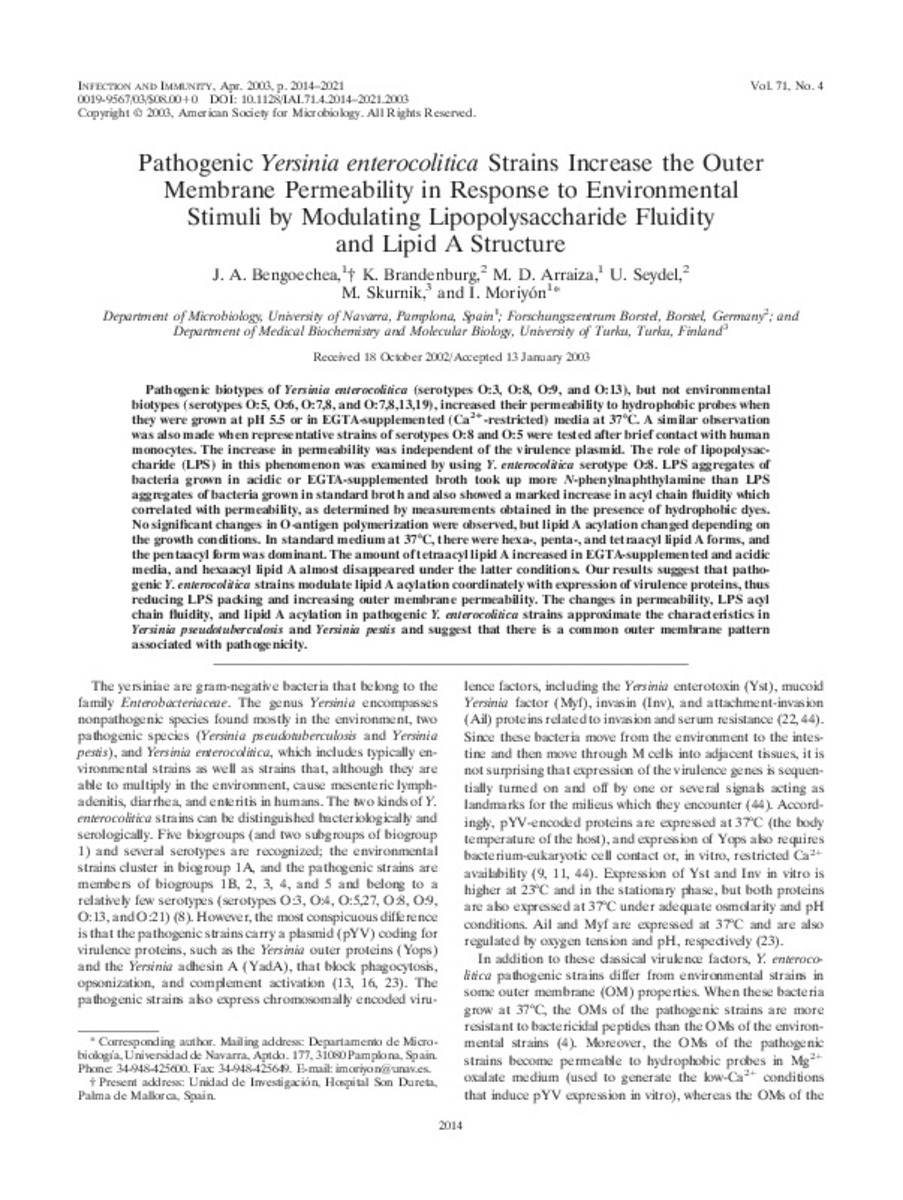Pathogenic Yersinia enterocolitica strains increase the outer membrane permeability in response to environmental stimuli by modulating lipopolysaccharide fluidity and lipid A structure
Keywords:
Pseudomonas-aeruginosa
Hydrophobic permeants
Brucella abortus
Virulence
Peptides
Pseudotuberculosis
Temperature
Resistance
Pestis
Gene
Publisher:
American Society for Microbiology
Citation:
Bengoechea JA, Brandenburg K, Arraiza MD, Seydel U, Skurnik M, Moriyon I. Pathogenic Yersinia enterocolitica strains increase the outer membrane permeability in response to environmental stimuli by modulating lipopolysaccharide fluidity and lipid A structure. Infect Immun 2003 Apr;71(4):2014-2021.
Statistics and impact
0 citas en

0 citas en

Items in Dadun are protected by copyright, with all rights reserved, unless otherwise indicated.







